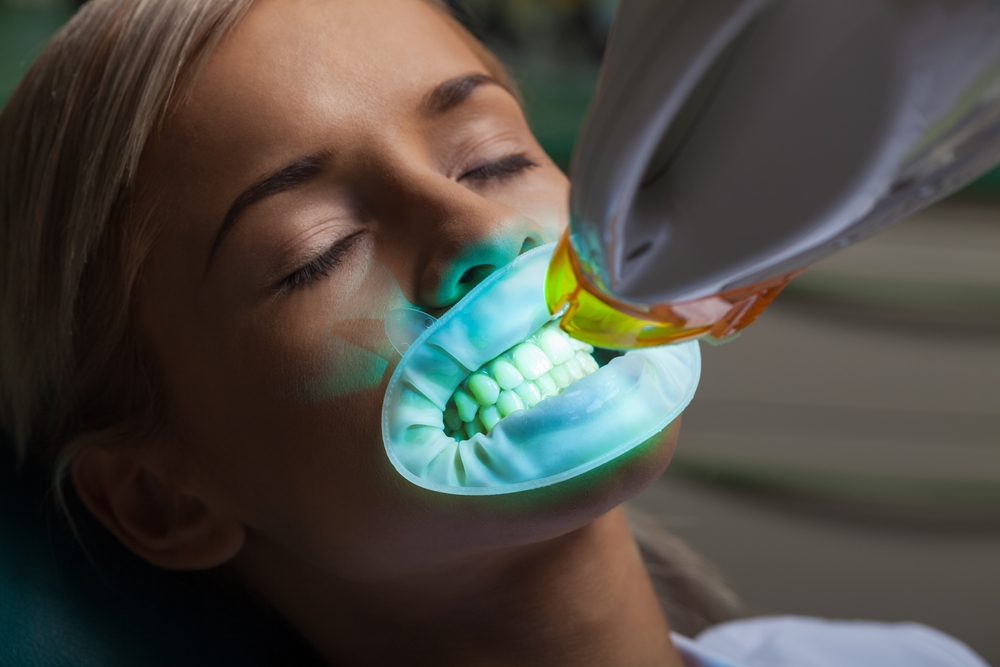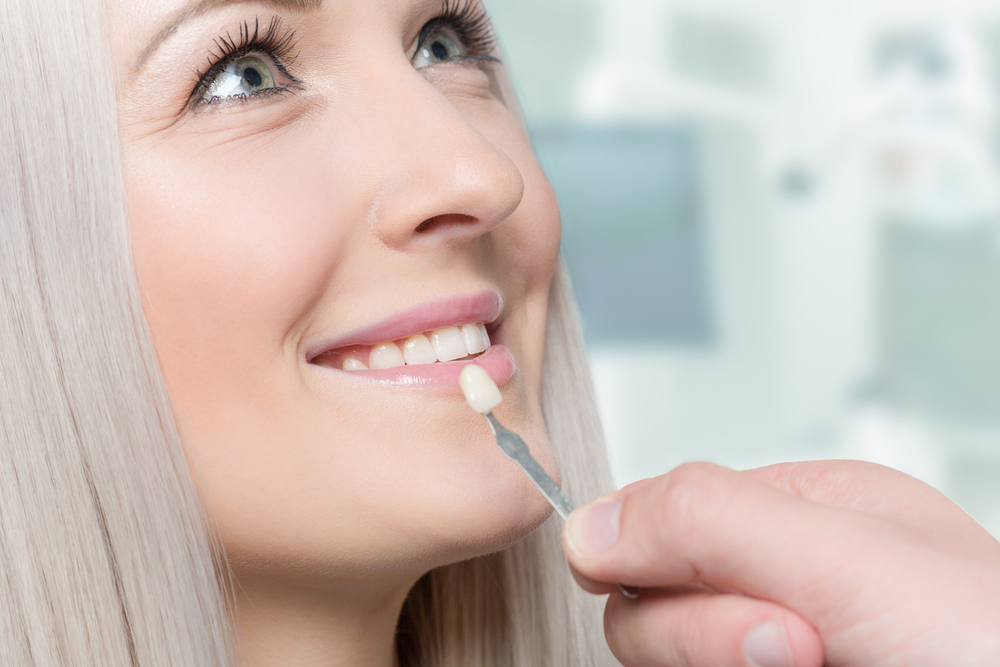What Types and Techniques of Teeth Whitening Should You Consider?
Embarking on a journey to achieve a brighter smile through teeth whitening can be exciting yet filled with questions. This comprehensive guide aims to illuminate the path by exploring various whitening methods, focusing on the advantages of professional treatments like those offered by Greenspoint Dental.
What Sets Professional Teeth Whitening Apart?
Professional teeth whitening offers a level of precision, safety, and results that at-home kits simply can’t match. With access to higher concentrations of whitening agents and expert application techniques, dental professionals ensure your smile brightens effectively while minimizing potential side effects. Greenspoint does offer take-home kits as well that are custom-fit to your mouth for safety and effectiveness, but our focus here is on in-office, laser whitening.
Why Consider In-Office Whitening?
In-office whitening procedures stand out for their immediate and noticeable results. But what exactly happens during such a visit? Understanding the process—from the application of a protective barrier to your gums to the careful monitoring of the whitening agent—can help demystify the experience, showcasing the meticulous care taken to ensure your comfort and satisfaction.
How Do Custom Take-Home Kits Compare to In-Office Whitening?
Offered as a bridge between in-office treatments and over-the-counter solutions, custom take-home kits from your dentist combine convenience with professional oversight. But how effective are they, and what makes them a superior choice for many seeking gradual, yet impactful, whitening results?
Custom take-home kits offer a blend of convenience and professional-grade effectiveness, making them an attractive option for those seeking to brighten their smile gradually. These kits, tailored by dental professionals, provide a higher level of whitening agent than over-the-counter options, ensuring more significant results. Additionally, they come with custom-fitted trays designed for each individual’s mouth, enhancing the whitening effect while minimizing the risk of irritation to gums and soft tissues. This personalized approach, combined with the ability to control the frequency and duration of treatment, makes custom take-home kits a preferred choice for many aiming for a brighter smile with the oversight of dental experts.
How Do You Determine the Best Whitening Option for Your Needs?
With several paths to a brighter smile, making the right choice can seem daunting. How do you decide between the immediacy of in-office treatments and the flexibility of take-home kits? Determining the best whitening option involves assessing your lifestyle, such as your schedule and preference for treatment location. Consider sensitivity levels; if you have sensitive teeth, professional guidance can customize treatments to minimize discomfort. Cosmetic goals also play a role; decide whether you’re seeking dramatic, immediate results or gradual improvement. Balancing these factors with professional advice will guide you toward the most suitable whitening method, ensuring it aligns with your personal needs and expectations for a brighter smile.
What Steps Should You Take to Maintain Your Smile After Teeth Whitening?
Achieving your desired shade is just the beginning. How do you maintain these results, and what role do follow-up treatments and lifestyle adjustments play in keeping your smile bright? Tips on dietary choices, oral hygiene practices, and periodic touch-ups are discussed below to ensure your investment in a brighter smile lasts.
What are the Side Effects of Teeth Whitening?
When considering teeth whitening, it’s important to be aware of potential side effects to make an informed decision. Common issues include tooth sensitivity and gum pain, often resulting from the chemical reactions of whitening agents like peroxide. Sensitivity might last up to 24 hours post-procedure, and specific toothpaste might be recommended to alleviate discomfort. Additionally, soft tissue irritation can occur if the whitening gel contacts gums, causing chemical burns. Studies have shown that enamel is minutely damaged when whitening teeth- though this side effect is less common, prolonged exposure to teeth whitening bleaching agents can damage enamel.
Greenspoint Dental is committed to ensuring the safety and comfort of their patients during teeth whitening procedures. They employ advanced equipment designed specifically to protect gums and soft tissues, focusing the treatment solely on the teeth. This approach effectively minimizes potential side effects, such as sensitivity and irritation, allowing for a more comfortable and positive whitening experience.
How Can You Maximize the Results of Your Teeth Whitening with Proper Post-Treatment Care?
Achieving a brighter smile through teeth whitening is just the beginning. The key to long-lasting results lies in effective post-treatment care. Read the essential tips below to extend the life of your teeth whitening, ensuring your smile stays vibrant longer.
Why Does Teeth Sensitivity Occur After Whitening and How Can You Manage It?
Teeth sensitivity is a common side effect post-whitening, often due to the exposure of dentin and the use of peroxide-based agents. This sensitivity typically diminishes within 24 hours. To manage it, consider using toothpaste formulated for sensitive teeth and avoid extreme temperature foods and beverages
What Diet and Lifestyle Adjustments Are Necessary to Preserve Whitening Results?
The first few days post-whitening are critical for maintaining your results. Avoiding foods and drinks known for staining, such as coffee, tea, wine, and certain fruits, can prevent discoloration. Embracing a lifestyle that prioritizes oral health, including quitting smoking, can also preserve the brightness of your smile.
What Are the Best Oral Hygiene Practices to Follow After Teeth Whitening?
Maintaining a rigorous oral hygiene routine is crucial after teeth whitening. Brushing twice a day, flossing daily, and using an antiseptic mouthwash can help keep your teeth shining. Regular professional cleanings at your dental office further enhance the longevity of your whitening results.
When Are Touch-Up Treatments Necessary, and What Does Greenspoint Dental Offer?
Touch-up treatments can be vital for keeping your teeth at their whitest. The frequency of these treatments depends on individual factors like diet and oral hygiene practices. Greenspoint Dental offers customized follow-up care options to ensure your smile remains bright.
Why Trust Greenspoint Dental for Your Whitening Needs?
Choosing where to entrust your smile for whitening treatments is crucial. Greenspoint Dental distinguishes itself in cosmetic dentistry through its commitment to personalized care, state-of-the-art technology, and extensive expertise in teeth whitening. By offering both in-office treatments for immediate results and customized take-home kits for gradual whitening, we cater to diverse patient needs and preferences. Our approach prioritizes patient comfort and safety, minimizing potential side effects while maximizing whitening effectiveness. This dedication to excellence and patient satisfaction positions Greenspoint Dental as a leading choice for those seeking professional teeth whitening services in Houston.
As you consider the best route to achieve the bright smile you’ve envisioned, remember that professional guidance is invaluable. Greenspoint Dental offers the expertise, options, and personalized care to ensure your teeth whitening journey is safe, effective, and tailored to you.
If you’ve looked into teeth whitening and are ready for a new, brilliant smile, Greenspoint Dental offers ZOOM! teeth whitening– a painless, one-hour procedure you can schedule at your convenience. Contact us today to get started.




